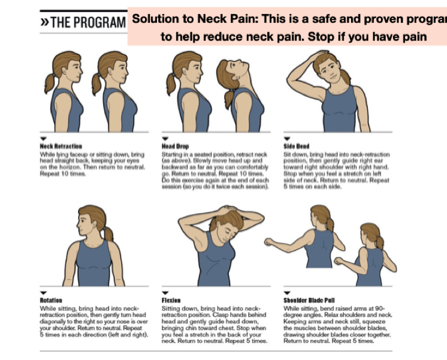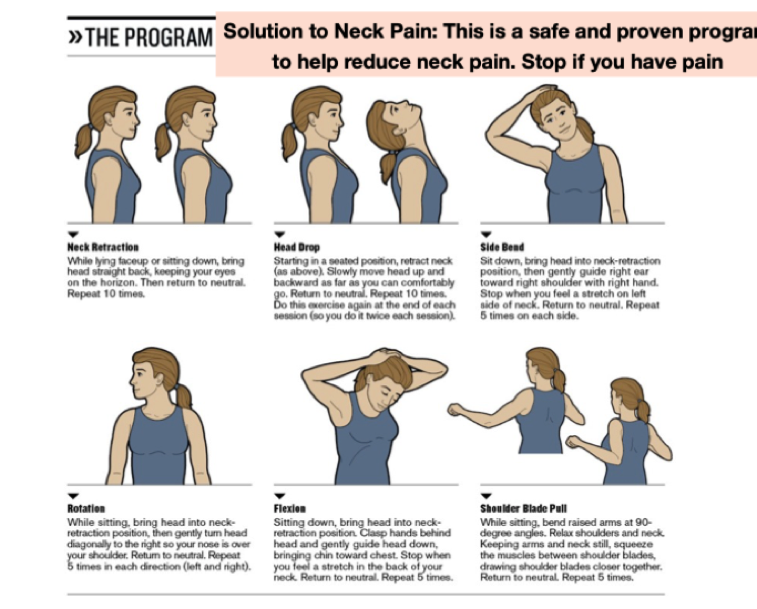Neck Care Program
Know Your Joints
WELCOME TO OUR NECK CARE PROGRAM. PLEASE WATCH THE VIDEO TO THE RIGHT DESCRIBING SOME BASIC PRINCIPLES AND THEN DOWNLOAD THE TWO EXERCISE LISTS BELOW TO START. WE WILL ADD ADDITIONAL EXERISES IN THE FUTURE. ALSO, SEE BELOW FOR SOME HELPFUL NECK CARE TIPS: SUCH AS COMPUTER, MOBILE DEVICE, AND SLEEPING POSTURES.
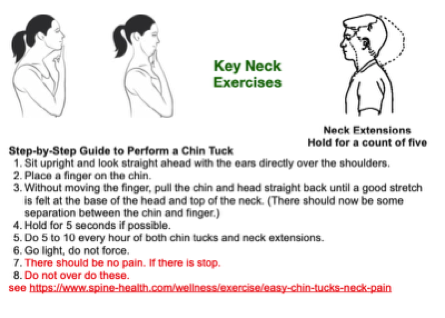
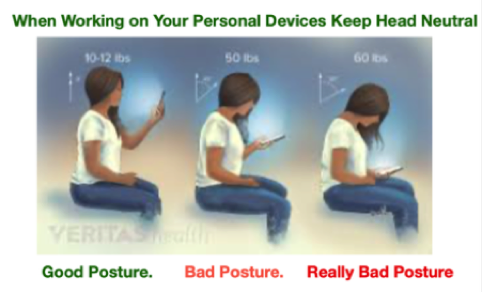
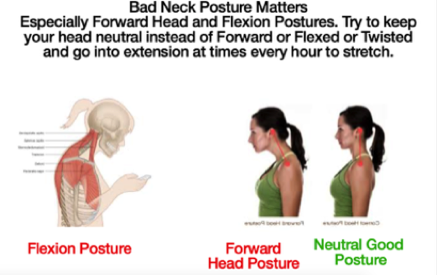
Great Neck Exercise Series PDF Download
See below to learn more about this program.
Posture and Neck Health Matters - Do you have good neck posture? It is essential for neck and shoulder health. There is no best posture because you should try to alter your posture, but being in neutral is a very good posture. That is where your head sits over your shoulders.
See us to determine your neck posture. We can do it on-line via zoom video conferencing or in person.
Do you have excessive neck curvature? A slight curvature is normal, but it should not be excessive. Is your head straight or is it extended forward? Correct posture is an imaginary almost straight line from the ear through the shoulder, hip, knee, and ankle joints. Your head should sit on top of your shoulders. In other words a vertical line should be present from your tip of your shoulder to the opening of your ear. THE EXERCISES LISTED ABOVE WILL HELP WITH THIS POSTURE.
Movement and Neck Health
How we lift objects, use our computers and mobile devices, and breathe can impact our neck and overall health. One of the best things you can do for your neck is to keep it moving. Do not stay in the same static position even if it is a good one. Do you try to alter your posture at your workstation?
Demonstrate how you sit at a workstation.
Where is your eye level? Raise your monitor so that the top third of your screen is at eye-level. What was your angle of monitor?
How far away is your monitor? Measure the distance from your monitor to your eyes to ensure it is 18 to 24 inches away from your face. What was your distance of monitor?
Do you use arm rests? Yes or No Use armrests when working at a desk is a must. Also, use a headset when using a phone for a long period of time.
Do your shoulders (trapezius) elevate when you do a row motion? Yes or No
If your shoulders (trapezius) elevate when performing a row exercise it could be a sign that your upper trapezius are overly dominant. Upper trapezius dominance may lead to forward head posture, trigger point formation, and neck pain.
Do your sleep on your side, back, or front? The position that you sleep at night places may place a great deal of strain on your neck. While sleeping on your back make sure that you head remains in a neutral position where there is a natural curve. The top of your head should not be higher than your chin it should be in the same plane. While sleeping on your side make sure your head and neck remain in the same plane; in other words do not sleep with your head bent. Do not sleep on your stomach it keeps the neck in a twisted position all night. How do you sleep? Back, Side, or Front.
Demonstrate how you use a mobile device. Do you hold your device at your waist with a bent neck? Rate based on the diagram below how you use your device ( 0 to 4 ). You should keep your device at chest level with neck at neutral. How do you hold your mobile device? I hope you are a zero.

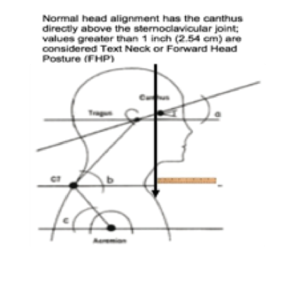
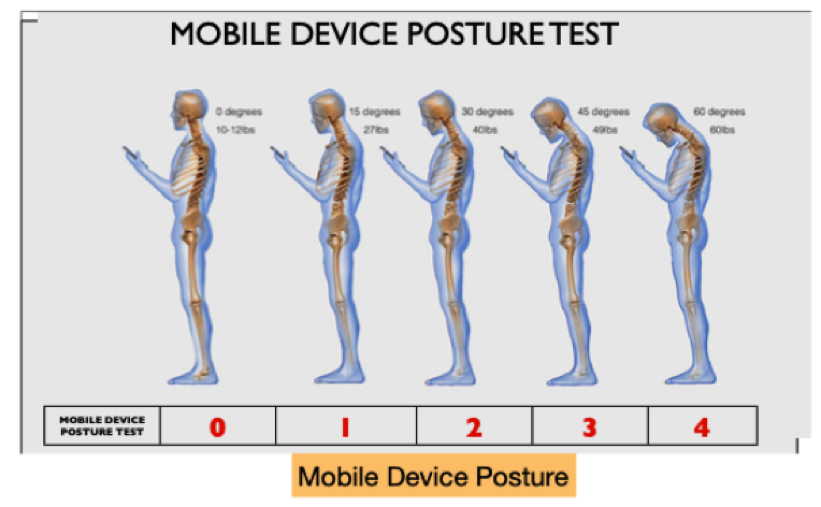
More on the Above Program
This is one of the best programs I have found on neck care exercises. I use them with working with people all the time. It was researched and presented in a study in the Annals of Internal Medicine. It was touted as an effective way to find medication-free relief via six stretches that can easily be done throughout the day at home and in the office.
Minnesota researchers showed that frequent neck and shoulder stretching can provide relief that’s almost as good or even better for people suffering from moderate discomfort than through medication or chiropractic care. In the study, more than three quarters of participants who completed a 12-week exercise regimen experienced at least a 50 percent drop in pain; following up a year later, researchers found that 37 percent had a complete reduction in pain, compared with 27 percent of those who’d had chiropractic treatment and 17 percent of those who had been given over-the-counter and prescription anti-inflammatory and painkilling drugs. The exercises used in the study emphasize what’s known as neck retraction or as I refer to in the video as chin tucks: This stretches muscles at the base of the skull and strengthens deep muscles in the front of your neck, ameliorating some of the damage caused by poor posture. “The exercises help the joints and muscles work in a coordinated manner,” says lead study author Gert Bronfort, DC, PhD, vice president of research at the Wolfe-Harris Center for Clinical Studies at Northwestern Health Sciences University in Bloomington, Minnesota. Do the series one to six to eight times a day. Each session should take less than five -minutes—and will probably make you feel a little better right away. Begin each stretch with your neck centered in a neutral position—not tilted forward, back or to the side—and keep your shoulder muscles relaxed. Hold the end position for each exercise for two or three seconds, making sure you inhale and then exhale. DO NOT PUSH IT. GO TO FIRST RESISTANE BARRIER AND HOLD IT. DO NOT OVER DO IT. GO SLOW. BUMP INTO THE PAIN, NOT THROUGH IT. STOP IF YOU HAVE PAIN.
Make an appointment with us either in person or online to talk about a conditioning program that is specific for you and possibly have a neck range of motion assessment. Email us at fittec@me.com. Every body is different so every conditioning program must be designed to account for that.
Chin Tuck and Extension Exercises PDF Download
Easy Program - do several times throughout the day
